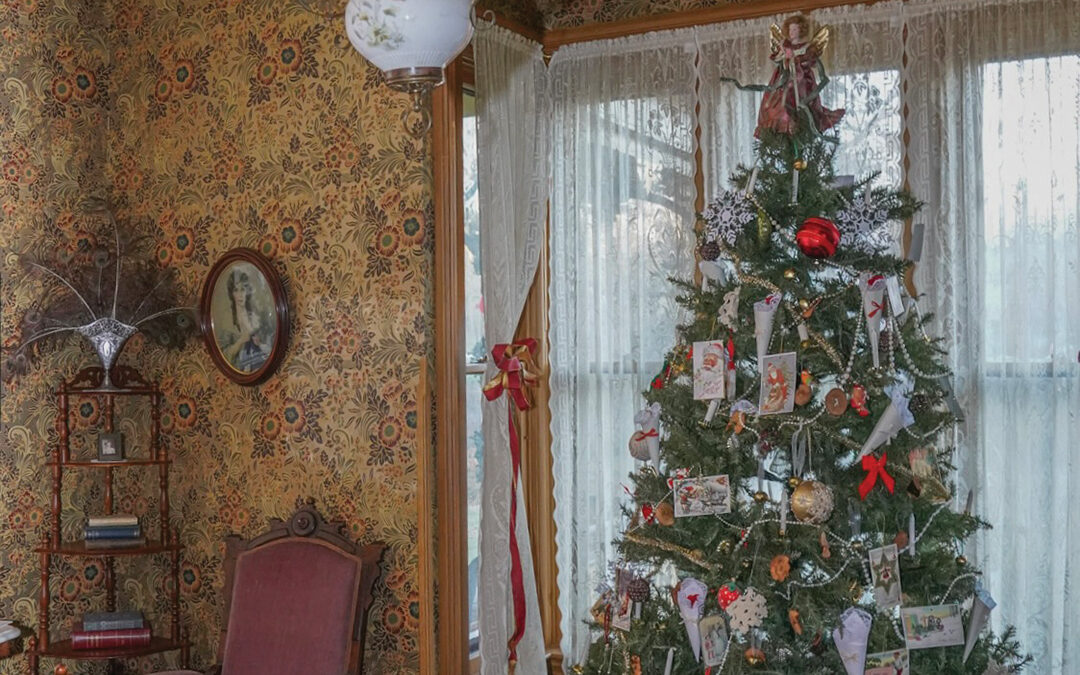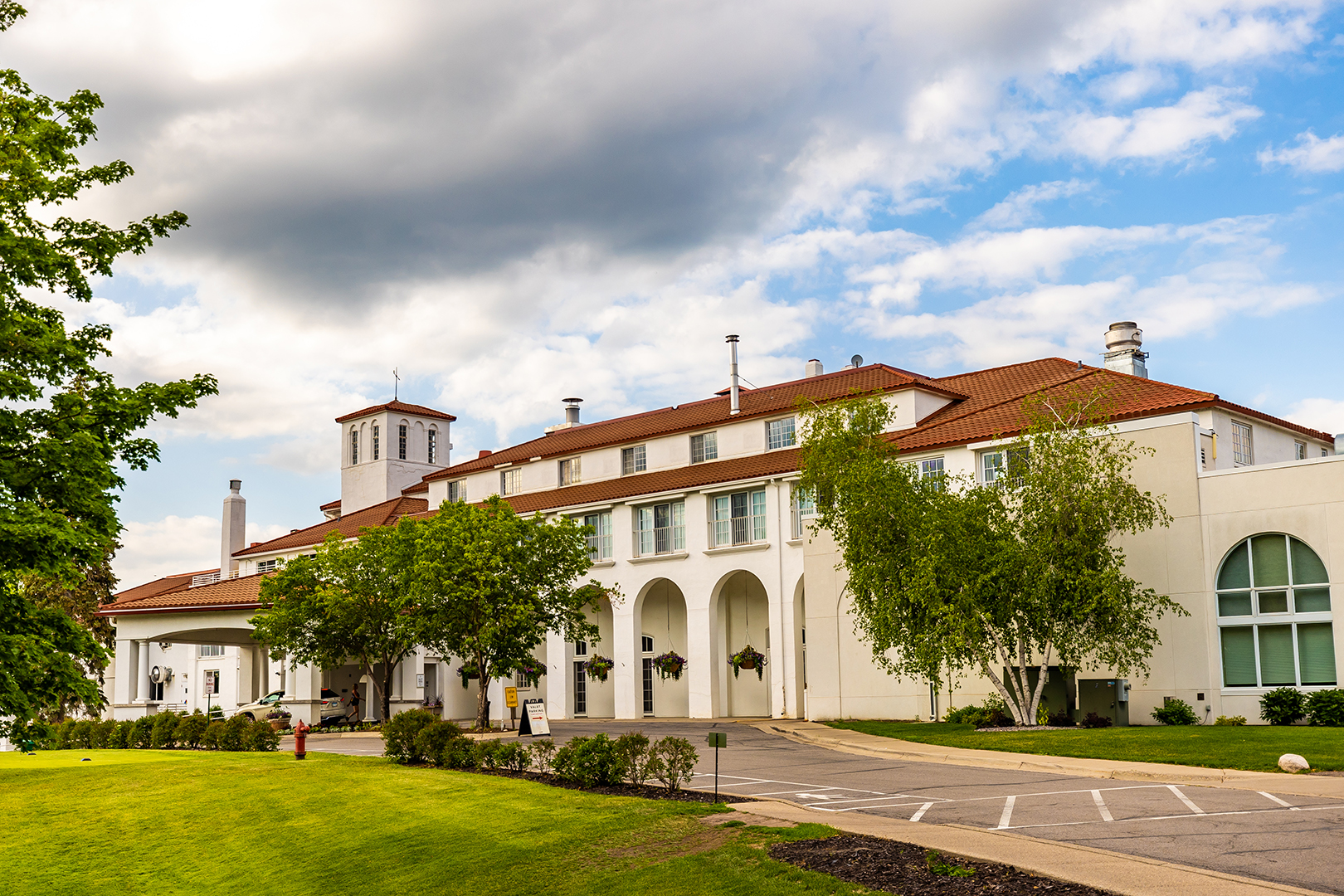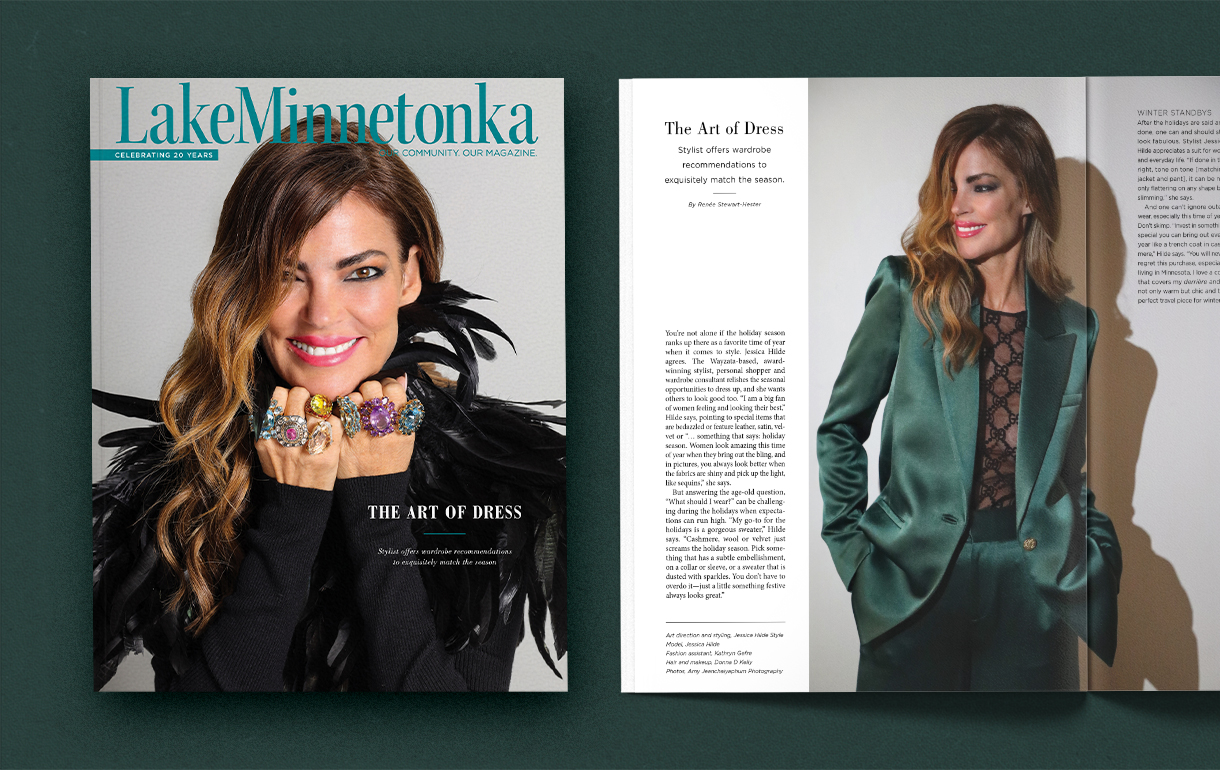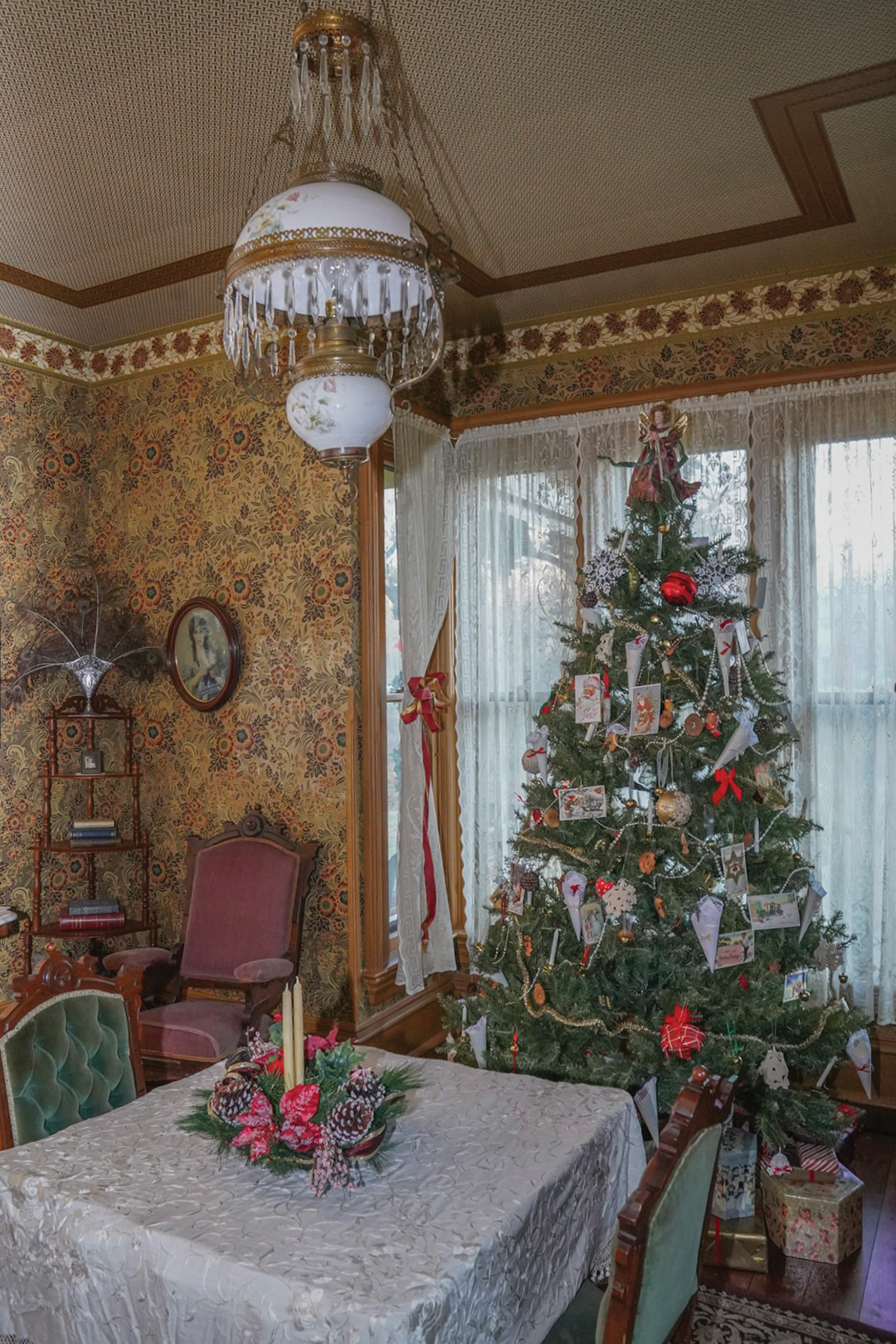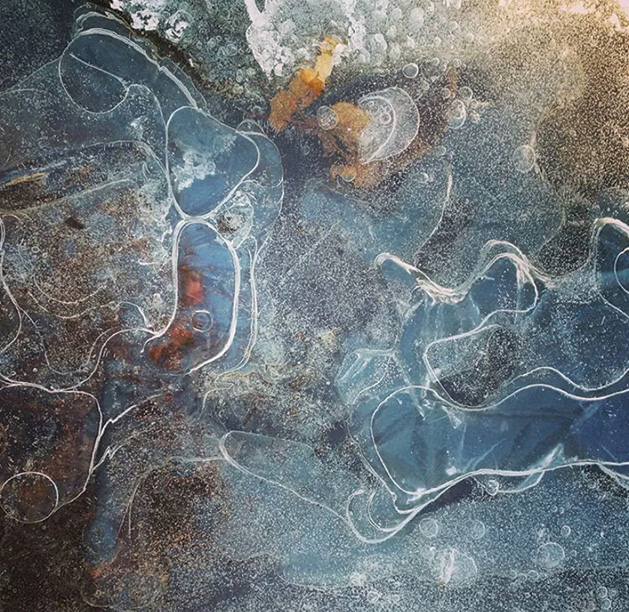
Photos: Anne Marie Ruff Grewal
As winter gives way to spring, the season of physics begins.
I call this the season of physics. Most living residents of the woods have retreated to dormancy, hibernation or warmer climates, so temperature, pressure, humidity and gravity drive the daily changes in the landscape. As conditions change, the snow in the woods takes on an endless variety of characteristics, fresh snow falls soft and fluffy, and then may develop a crusted surface, or pack down into solid ice from repeated thawing and freezing, or age into porous and slushy as melting snow trickles down with the pull of gravity. At this time of year, gravity pulls enough water to the end of my walkway to form a puddle which thawing and freezing mold into astonishing beauty and variety. On March mornings, I can often be seen resting on my haunches to photograph this puddle, a habit that has led my neighbors to question my sanity. But the puddle rewards me with compositions of air trapped beneath the ice, and water freezing into ice crystals that fractalize like ferns, or six pointed maple leaves, and then soften as the day warms into shapes that looks like a row of tiny icy pine trees. Occasionally leaves fall into the melting puddle, only to be trapped with an overnight freeze like little boats in suspended animation. And when conditions are perfect, a crust of ice forms on top, just begging for the stomp of boots to shatter the glass-like ice with the incredibly satisfying sound of crashing chimes.


Anne Marie Ruff Grewal is a writer, editor and environmentalist who has recently published her second novel, Beneath the Same Heaven—a story of love and terrorism.


